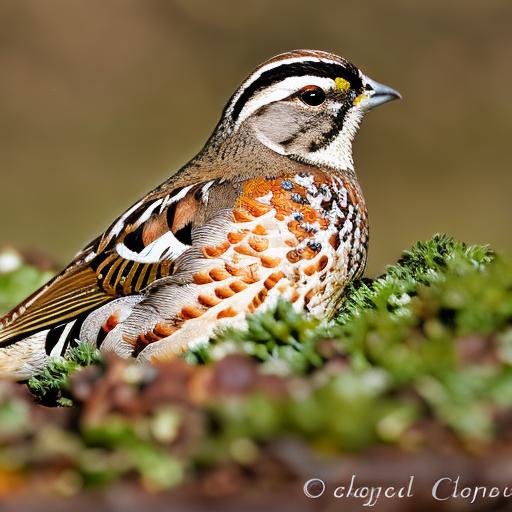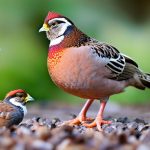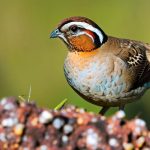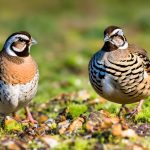Quail are small, ground-dwelling birds that are known for their distinctive calls and quick, darting movements. They are often found in grasslands, agricultural fields, and open woodlands, where they forage for seeds, insects, and small invertebrates. Quail are social birds and often gather in coveys, which can consist of anywhere from a few to several dozen birds. They are also known for their ability to fly short distances at high speeds, making them difficult to catch or deter.
Quail are primarily active during the day, foraging for food and seeking shelter from predators. They are ground-nesters, meaning they build their nests on the ground, often in tall grass or under shrubs. This behavior makes them vulnerable to predation and also makes it challenging to deter them from specific areas. Understanding the behavior of quail is essential for effectively managing and deterring them from unwanted areas. By understanding their habits and preferences, it becomes easier to implement strategies that discourage them from causing damage or becoming a nuisance.
Key Takeaways
- Quail are ground-dwelling birds that are attracted to open areas with low vegetation and easy access to food and water.
- Physical barriers such as fences and netting can be effective in preventing quail from entering specific areas.
- Natural deterrents like predator decoys, motion-activated sprinklers, and reflective tape can help deter quail from entering unwanted areas.
- Scare tactics such as loud noises, sudden movements, and visual deterrents can be used to startle and discourage quail from frequenting certain areas.
- Removing attractive food sources such as spilled birdseed, fallen fruits, and accessible garbage can help reduce the presence of quail.
- Repellents such as taste aversions and scent-based products can be used to discourage quail from entering specific areas.
- Seeking professional help from wildlife control experts or pest management professionals may be necessary for persistent quail issues.
Creating Physical Barriers
One effective way to deter quail from specific areas is to create physical barriers that prevent them from accessing those spaces. This can be achieved by installing fencing or netting around gardens, agricultural fields, or other areas where quail are causing damage. The fencing should be tall enough to prevent quail from flying over it and buried into the ground to prevent them from digging underneath it. Additionally, using smaller mesh netting can prevent quail from squeezing through the openings.
Another physical barrier that can be effective in deterring quail is the use of scare tape or reflective materials. These items can be hung around the perimeter of the area to create a visual deterrent for the birds. The movement and reflection of light off these materials can startle and confuse quail, making them less likely to approach the area. Creating physical barriers is a proactive approach to managing quail populations and preventing damage to crops or gardens.
Using Natural Deterrents
In addition to physical barriers, natural deterrents can also be effective in deterring quail from specific areas. One natural deterrent is the use of predator decoys, such as plastic owls or hawks. These decoys can be placed in the area where quail are causing damage to create the illusion of a predator presence, which can discourage the birds from approaching. It’s important to regularly move these decoys around to prevent quail from becoming accustomed to their presence.
Another natural deterrent is the use of scent-based repellents, such as predator urine or essential oils. These scents can create a hostile environment for quail and discourage them from entering the area. Additionally, planting natural deterrent plants, such as marigolds or garlic, can also help repel quail from specific areas. These natural deterrents provide a non-invasive way to manage quail populations and prevent damage to crops or gardens.
Implementing Scare Tactics
Scare tactics can be an effective way to deter quail from specific areas and prevent damage to crops or gardens. One common scare tactic is the use of noise-making devices, such as propane cannons or bird distress calls. These devices emit loud noises that startle and scare quail, making them less likely to approach the area. It’s important to vary the timing and location of these devices to prevent quail from becoming accustomed to the noise.
Another scare tactic is the use of visual deterrents, such as scarecrows or motion-activated sprinklers. These visual deterrents create the illusion of a threat and can discourage quail from approaching the area. Additionally, using motion-activated lights or lasers can also startle and deter quail from specific areas. Implementing scare tactics is a proactive approach to managing quail populations and preventing damage to crops or gardens.
Removing Attractive Food Sources
Quail are attracted to areas with abundant food sources, so removing these sources can help deter them from specific areas. This can be achieved by regularly cleaning up spilled birdseed, fallen fruits, or other food sources that may attract quail. Additionally, using bird feeders with baffles or trays can prevent quail from accessing the food and discourage them from frequenting the area.
Another way to remove attractive food sources is by implementing crop rotation or cover cropping in agricultural fields. By rotating crops or planting cover crops that are less attractive to quail, it becomes less likely that they will cause damage to the crops. Removing attractive food sources is a proactive way to manage quail populations and prevent damage to crops or gardens.
Utilizing Repellents
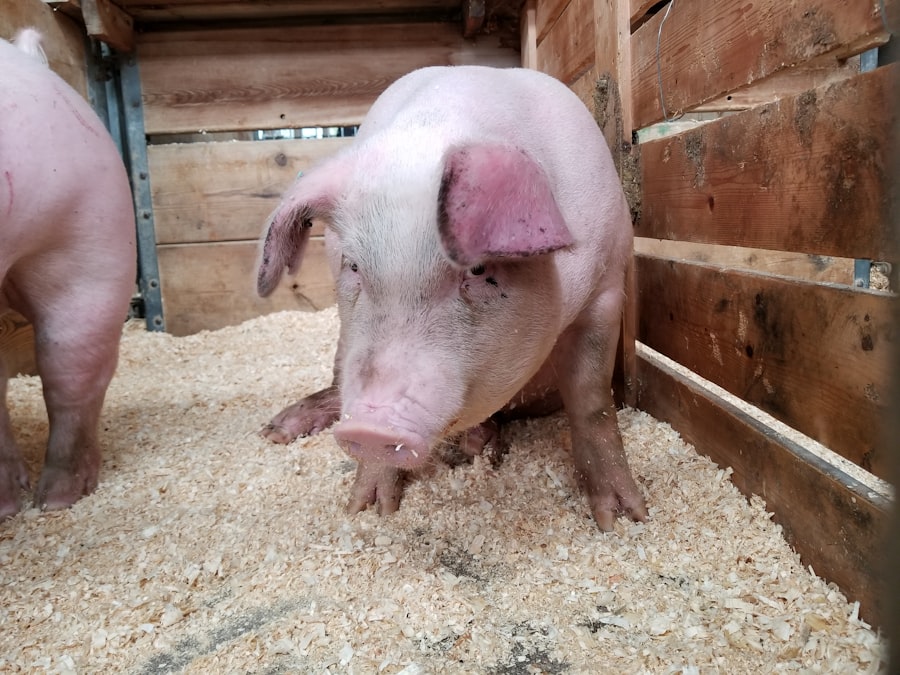
Repellents can be an effective way to deter quail from specific areas and prevent damage to crops or gardens. One common repellent is the use of taste-based deterrents, such as hot pepper sprays or garlic sprays. These sprays create a foul taste on plants or crops that discourages quail from feeding on them. It’s important to reapply these repellents regularly, especially after rain or irrigation.
Another repellent that can be effective in deterring quail is the use of visual deterrents, such as reflective tape or shiny objects. These visual repellents create a hostile environment for quail and discourage them from approaching the area. Additionally, using sonic repellents that emit high-frequency sounds can also startle and deter quail from specific areas. Utilizing repellents is a proactive approach to managing quail populations and preventing damage to crops or gardens.
Seeking Professional Help
If quail infestations persist despite implementing various deterrent methods, seeking professional help may be necessary. Pest control professionals have the knowledge and experience to effectively manage quail populations and prevent damage to crops or gardens. They can assess the situation, identify the most effective deterrent methods, and implement a comprehensive management plan.
Professional help may also be necessary if quail infestations pose a threat to public health or safety. In these cases, pest control professionals can safely and effectively remove quail from specific areas using humane trapping and relocation methods. Additionally, they can provide ongoing monitoring and maintenance to ensure that quail populations are effectively managed.
In conclusion, understanding the behavior of quail is essential for effectively managing and deterring them from unwanted areas. Creating physical barriers, using natural deterrents, implementing scare tactics, removing attractive food sources, utilizing repellents, and seeking professional help are all proactive approaches to managing quail populations and preventing damage to crops or gardens. By implementing these strategies, it becomes possible to effectively deter quail and minimize their impact on specific areas.
If you’re looking for ways to keep quail out of your garden, you may also be interested in learning about the best location for your chicken coop. Poultry Wizard offers a helpful article on “Where to Put Your Chicken Coop,” which provides valuable insights into choosing the ideal spot for your coop to ensure the safety and well-being of your chickens. Check out the article here for expert tips on creating a secure and comfortable environment for your feathered friends.
FAQs
What are quail and why are they a problem in the garden?
Quail are small, ground-dwelling birds that can cause damage to gardens by eating plants, seeds, and insects. They can also scratch and peck at the soil, causing disruption to the garden bed.
What are some effective methods for keeping quail out of the garden?
Some effective methods for keeping quail out of the garden include using physical barriers such as fences or netting, using scare tactics such as decoys or noise makers, and planting quail-resistant plants.
Are there any natural deterrents for keeping quail out of the garden?
Some natural deterrents for keeping quail out of the garden include using strong-smelling plants such as lavender or marigolds, and using natural predators such as cats or dogs to deter quail from entering the garden.
Are there any legal restrictions on how to keep quail out of the garden?
It is important to check local regulations and laws regarding the control of quail, as some areas may have restrictions on the use of certain deterrent methods or the hunting of quail.
What are some quail-friendly alternatives to keep them away from the garden?
Creating a separate area for quail to forage and providing them with food and water can help keep them away from the garden. Additionally, providing cover and nesting sites away from the garden can also help deter quail from entering the garden.
Meet Walter, the feathered-friend fanatic of Florida! Nestled in the sunshine state, Walter struts through life with his feathered companions, clucking his way to happiness. With a coop that’s fancier than a five-star hotel, he’s the Don Juan of the chicken world. When he’s not teaching his hens to do the cha-cha, you’ll find him in a heated debate with his prized rooster, Sir Clucks-a-Lot. Walter’s poultry passion is no yolk; he’s the sunny-side-up guy you never knew you needed in your flock of friends!

